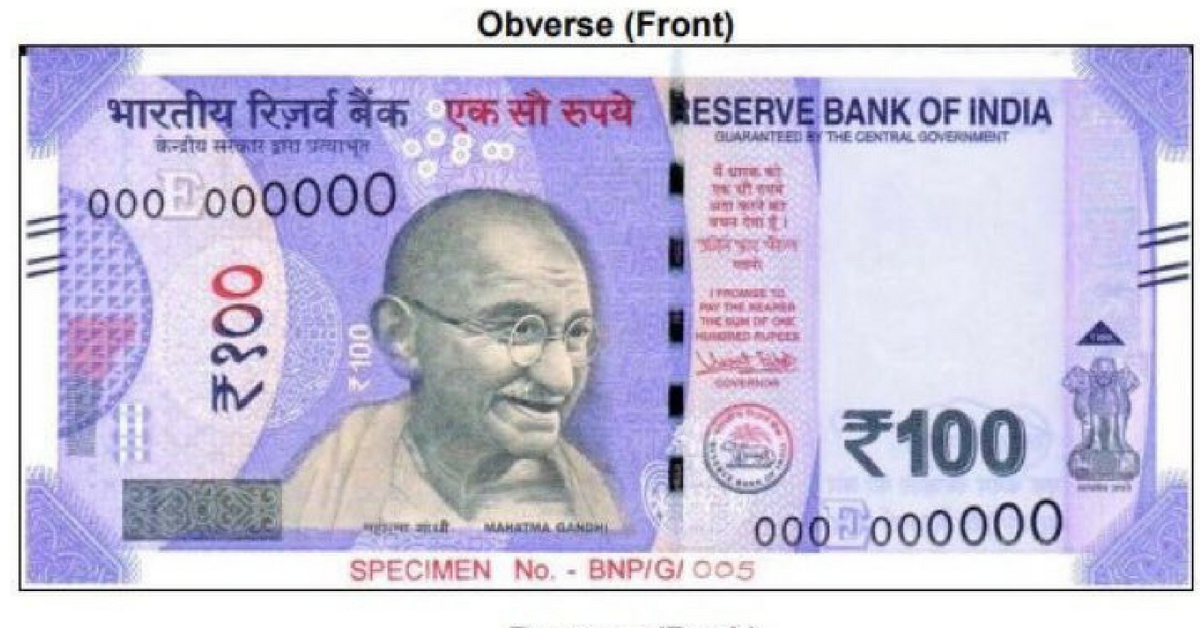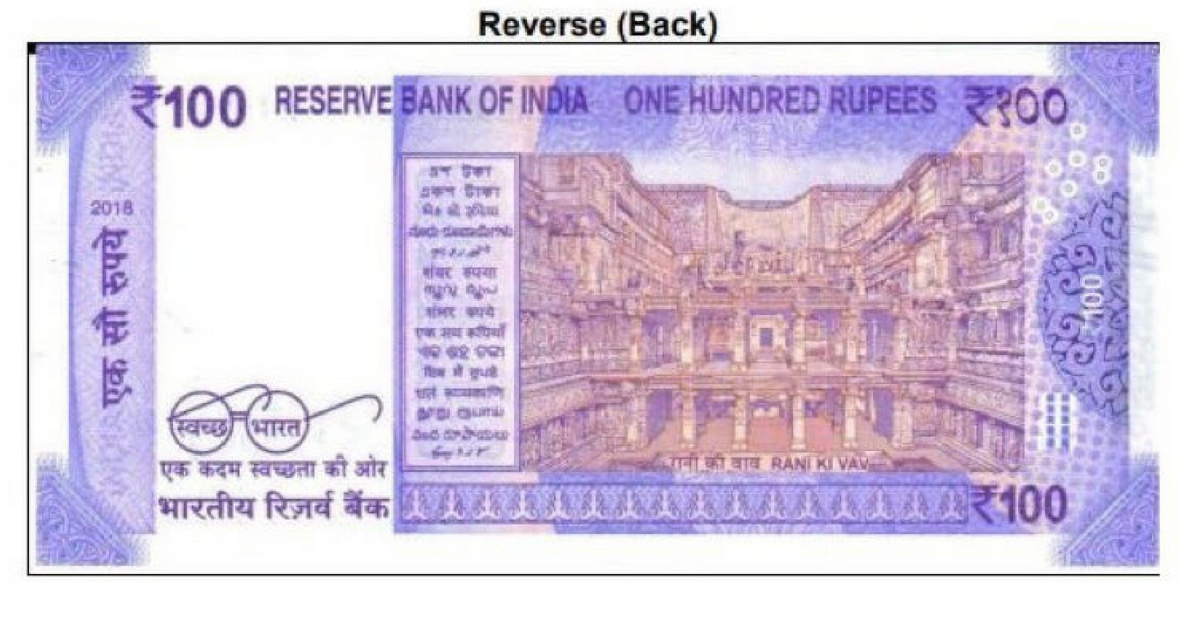Rani Ka Vav & Lavender Colour: 10 Things To Know About RBI’s New Rs 100 Note!
The RBI is all set to introduce a brand new Rs 100 note, with several new improved features.

Demonetisation heralded the era of new currency notes in India, beginning with the new Rs 2000 note, which was pink in colour.
This was just the beginning, and soon, the RBI introduced coloured versions of the Rs 10, Rs 50, Rs 200, and Rs 500 banknotes.
Only the Rs 20 and Rs 100 notes prevailed, but even that is soon going to change. On Thursday, the RBI announced that it has decided to launch new Rs 100 notes in the Mahatma Gandhi (new) series, and they will be a pleasing shade of lavender, reports the Hindustan Times.
Well, the advent of the Rs 100 note means that only the Rs 20 note from the earlier generation of currency notes will be left!
Here are ten things to know about the new Rs 100 notes.


1. The size of the new banknote is 66mm x 142mm, and it is smaller than the notes currently in circulation, which are 75mm x 157mm. Hence, ATMs will need to make provisions to accommodate these new notes.
2. The note has certain new micro-security features, which will be visible under ultraviolet light.
3. The new Rs 100 notes will bear the signature of Urjit Patel, RBI Governor, with a promise clause, a guarantee clause and the RBI emblem towards the right of the portrait of Mahatma Gandhi.
4. The front of the note will contain a latent image with a denominational numeral 100, a denominational numeral in 100 written in Devanagari, and a see-through register with denominational numeral 100. It will have a portrait of Gandhiji in the centre, and the micro-letters ‘RBI’, ‘Bharat’, (in Devanagari), ‘India’, and ‘100’.
5. The front of the note will also have a windowed security thread with ‘Bharat’ inscribed in Devanagari, and RBI with a colour shift feature, which means that the colour will change from green to blue when the note is tilted. The note’s front also has a Ashoka Pillar emblem, and electrotype watermarks, as well as a number panel with numerals in ascending font on the top left and bottom right side.
6. The reverse of the note will have the year of printing on the left, as well as the Swachh Bharat logo and slogan, a denominational numeral in 100 (in Devanagari), and a language panel.
7. The motif of ‘Rani ki vav’, will adorn these notes. ‘Rani ki vav’, interestingly, is an intricately constructed stepwell, located on the bank of the Saraswati river, in Patan, Gujarat, and is a World Heritage Site.
8. To ensure that the note can be easily used by the visually-impaired, there be a raised printing of Mahatma Gandhi, an Ashoka Pillar Emblem, a raised triangular identification mark with micro-text 100, and four angular bleed lines on both the right and left side of the note.
9. The note will be printed using indigenous ink at the printing press in Dewas, a city in Madhya Pradesh. Interestingly, even the Rs 2000 notes were printed here, but foreign ink was used.
10. The new Rs 100 note will be a little larger than the present Rs 10 note in terms of size.
Last year, in October, the RBI had announced that it would start printing the new banknotes in April 2018, after completing the printing of the new Rs 200 notes.
You may also like:– Got Soiled Currency Notes? Here’s How You Can Exchange Them in Any Bank
As is the procedure, once the new design of the banknote is introduced, printing and supply of the same for distribution, through the banking channel will slowly increase, according to the RBI.
(Edited by Gayatri Mishra)
Like this story? Or have something to share? Write to us: [email protected], or connect with us on Facebook and Twitter.
NEW: Click here to get positive news on WhatsApp!

Similar Story

Help Draft SEBI’s ‘Sustainable Finance’ Plan to Protect Environment With Investments
The Securities and Exchange Board of India (SEBI) is looking to adopt new policies that promote sustainable finance with ‘Green Debt Securities’. Here’s what that means and where you come in.
Read more >
If you found our stories insightful, informative, or even just enjoyable, we invite you to consider making a voluntary payment to support the work we do at The Better India. Your contribution helps us continue producing quality content that educates, inspires, and drives positive change.
Choose one of the payment options below for your contribution-
By paying for the stories you value, you directly contribute to sustaining our efforts focused on making a difference in the world. Together, let's ensure that impactful stories continue to be told and shared, enriching lives and communities alike.
Thank you for your support. Here are some frequently asked questions you might find helpful to know why you are contributing?


This story made me
-
97
-
121
-
89
-
167












